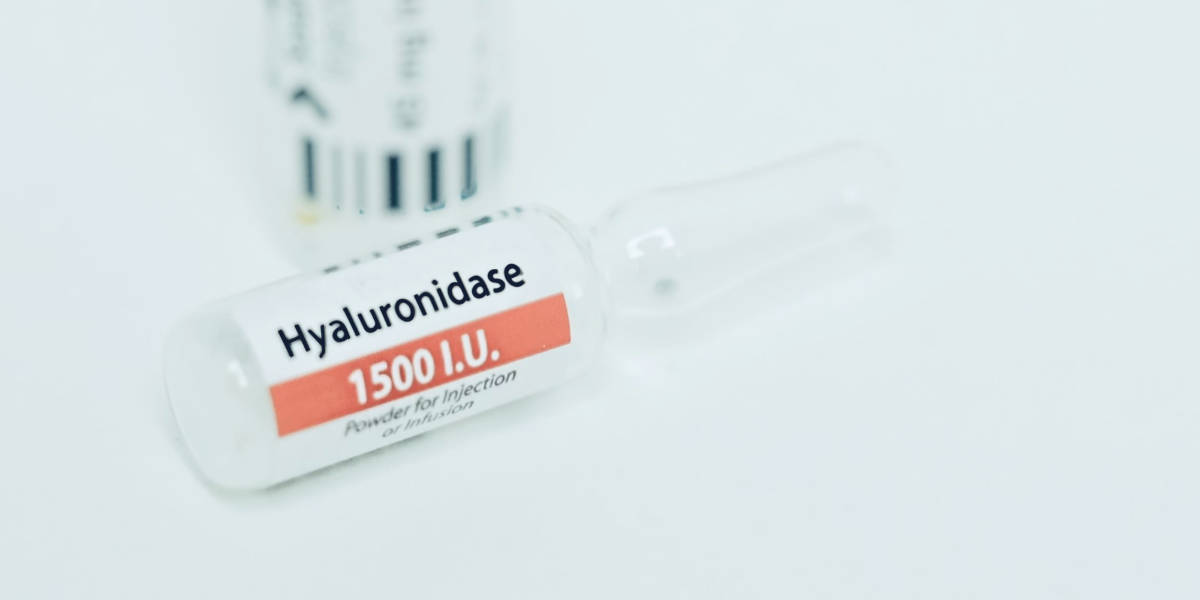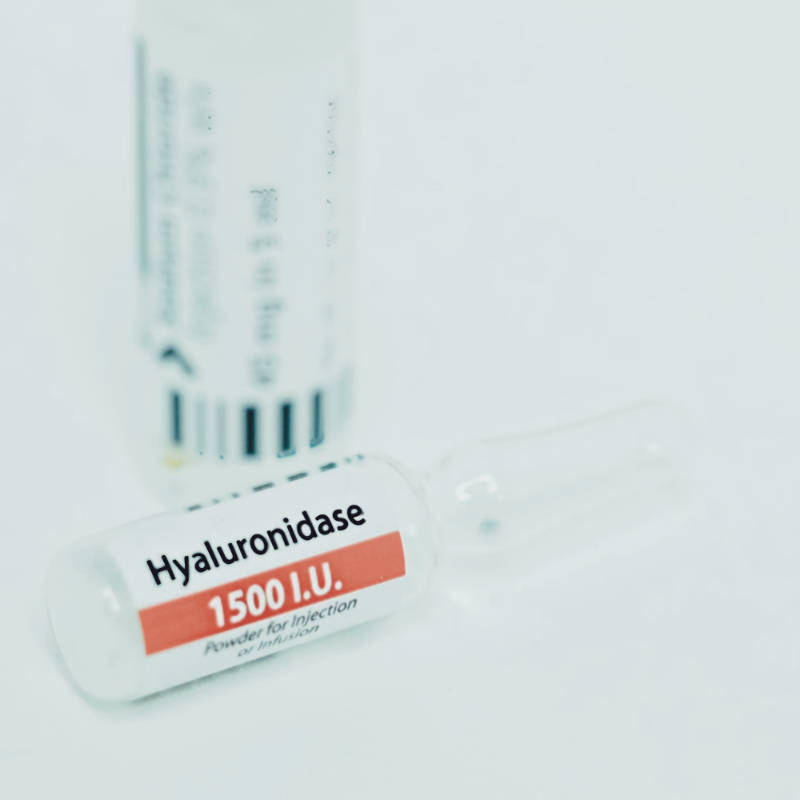

Dermal Filler Dissolving
Hyaluronidase (also known as hyalase) is an enzyme that breaks down hyaluronic acid, which is the main component of many dermal fillers. Hyaluronidase works by breaking down the bonds between the hyaluronic acid molecules, which allows the filler to be broken down.
Hyaluronidase is used for various indications:
- Overcorrection or asymmetry
- Filler migration
- Dissatisfaction with results
- Infection
- Vascular compromise (obstructed blood flow)
In the UK, hyaluronidase is a prescription product. As a regulated medication, it is important to seek the assistance of qualified medical practitioners who have the necessary expertise and experience.
Treatment snapshot
30 mins
appointment
2/5
discomfort
1-3 days
downtime
Lasts
Longterm
FAQs
Yes, hyaluronidase used for dermal filler can break down both the natural hyaluronic acid in your body as well as the synthetic hyaluronic acid in the dermal filler. However, as we are able to replenish our natural hyaluronic acid, this is temporary as our body replaces the losses.
Yes, hyaluronidase can be used to treat filler migration. Filler migration occurs when the injected filler material moves from the intended area to a different area, which can result in an undesirable appearance.
When hyaluronidase is injected into the area where the filler has migrated, it breaks down the hyaluronic acid in the filler, causing it to be reabsorbed by the body more quickly. This can help to reverse the effects of filler migration and restore a more natural appearance.
After the use of hyaluronidase to dissolve dermal filler, you can typically have filler injected again once the treated area has fully healed and any swelling or bruising has subsided. This may take a few days to a week, depending on the individual and the extent of the previous filler treatment.
It’s important to wait until the hyaluronidase has fully dissolved the previous filler before having a new filler injection, as injecting new filler into an area that still contains residual filler can lead to uneven or lumpy results.
Some patients may experience mild discomfort or stinging during the injection, similar to the sensation of a small pinch. This discomfort is usually short-lived and can be managed with topical numbing cream or local anaeasthetic to the area prior to the injection.
Hyaluronidase is usually safe and effective for dissolving hyaluronic acid-based dermal fillers, but may not be suitable for some individuals:
- Allergy to hyaluronidase or its ingredients
- Non-hyaluronic acid-based fillers
- Active infections or skin conditions in the treatment area
- Pregnancy or breastfeeding
Hyaluronidase, also known as hyalase, is an enzyme that breaks down hyaluronic acid, which is the main component of many dermal fillers. When injected into the skin, hyaluronidase works locally at the site of injection to dissolve the hyaluronic acid filler and does not spread throughout the body.
Hyaluronidase is specifically designed to dissolve hyaluronic acid-based fillers only. It will not dissolve non-hyaluronic acid-based fillers.
Hyaluronidase is produced by various bacteria, including Streptococcus pyogenes (Group A Streptococcus) and Staphylococcus aureus. These bacteria use hyaluronidase as an enzyme to break down hyaluronic acid, which allows them to spread through tissues and promote infection. In aesthetics, purified hyaluronidase derived from bacteria is used for dissolving hyaluronic acid-based dermal fillers.
If you are pregnant, it is generally advisable to avoid unnecessary medical treatments, including hyaluronidase, unless deemed absolutely necessary by a medical professional. Pregnancy is a critical time for both the mother and the developing baby, so caution is often taken with any medical interventions during this period.








